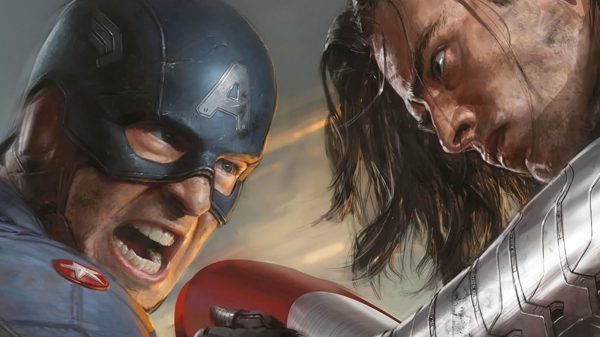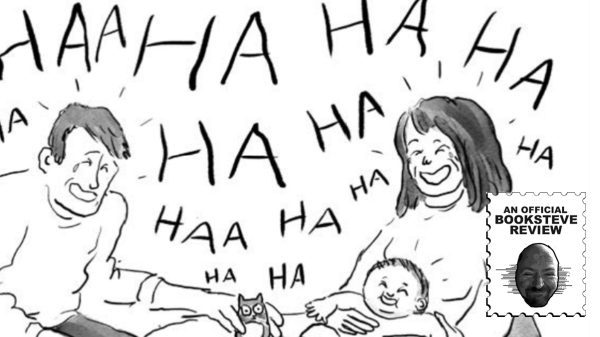 No self-respecting Steven Spielberg fan can fully appreciate the maestro’s finest cinematic popcorn confections without also charting his growth as an artist through his more serious adult-minded pictures. Yes—from Duel, Jaws, Close Encounters, and Raiders of the Lost Ark to The Sugarland Express, The Color Purple, Saving Private Ryan, and Schindler’s List; from Catch Me If You Can, A.I., War of the Worlds, and Empire of the Sun, to Hook, 1941, Tintin, and even The BFG; with War Horse, Munich, The Terminal, Amistad, Lincoln, Jurassic Park, Minority Report, and Always included in the mix too—Steven Spielberg is a veritable national treasure, among few directors whose name alone makes any movie he’s attached to a curiosity, if not a must-see.
No self-respecting Steven Spielberg fan can fully appreciate the maestro’s finest cinematic popcorn confections without also charting his growth as an artist through his more serious adult-minded pictures. Yes—from Duel, Jaws, Close Encounters, and Raiders of the Lost Ark to The Sugarland Express, The Color Purple, Saving Private Ryan, and Schindler’s List; from Catch Me If You Can, A.I., War of the Worlds, and Empire of the Sun, to Hook, 1941, Tintin, and even The BFG; with War Horse, Munich, The Terminal, Amistad, Lincoln, Jurassic Park, Minority Report, and Always included in the mix too—Steven Spielberg is a veritable national treasure, among few directors whose name alone makes any movie he’s attached to a curiosity, if not a must-see.
Read that list again. It’s not even complete, as I didn’t mention his sequels, nor did I list the classic movies he’s produced. Even as a life-long fan, I’m astonished not only at the physical volume of Spielberg’s output, but also at the intellectual breadth of his body of work.
His latest film is the Nixon-era Pentagon Papers thriller The Post, a docu-drama throwback to a bygone era when TV news options numbered merely three, dogged reporters from rival newspapers vied for the same elusive hot scoops, and one vindictive and egomaniacal resident of the White House threatened with his abusive authority the very sanctity of the First Amendment.
While overseeing post production on his upcoming virtual reality adventure Ready Player One, director Steven Spielberg made the movie The Post in what seems like record time, feeling today’s climate of ugly and hostile political discourse, gender inequality, prefabricated news, and frightful demagogues in high command perfectly mirrors the social flavor and paranoia of the Nixon era depicted in the movie. Meryl Streep and Tom Hanks portray Washington Post publisher Katherine Graham and editor Ben Bradlee, respectively, and an impressive supporting cast populates the newsroom. Though The Post doesn’t quite equal the greatness and timelessness of some other enduring newspaper dramas, the devil is in the details and Spielberg’s film is replete with wonderful period props and minutiae.
There is a fine tradition of crackling newspaper movies, from madcap comedies to chilling conspiracy dramas. Usually there is some deep-rooted political corruption that our intrepid reporter hero (or heroes) most expose, typically at great personal and professional risk; sometimes the life of an innocent man wrongfully accused hangs precariously in the balance while a clock counts down to an inexorable deadline; always there is a news room rivalry and/or camaraderie that provides for juicy repartee, a “Stop! Hold the presses!” moment milked for all the suspense it’s worth, and then a montage of production while we peer deep inside the inner workings of the machinery rumbling in the bowels of the building while endless streams of paper feed into gargantuan printing presses stretched back as far as the eye can see.
Like the best of them, The Post gleefully piles on these tropes, paying homage to the classic newsroom pictures that revel in the indelible stain and strong stink of page and ink.
Counting down, here are my five favorites.
#5) The Paper (1994)


Director Ron Howard and star Michael Keaton reunite for their third collaboration on this all-star salute to the madcap newsroom comedies of yesteryear. The script flirts with cliché over the racially charged wrongfully-accused-man plot hinge, and then tilts towards lunacy when some prickly sexual tension in the workplace erupts into a full-fledged he/she fistfight alongside the roaring presses, but the movie nails several crucial elements of the storied genre to proudly earn its ink stains.
Notably, the comical and competitive—and frequently vulgar—repartee of the worker bees inhabiting its bustling newsroom is sharp and rapid fire, and the story’s ticking-clock motif lends the proceedings swift momentum. Having directed three back-to-back-to-back big-budget productions containing a vast array of visual effects, practical stunts, and far-flung shooting locations, Howard was no doubt seeking a smaller-scale, set-confined, actor-driven tale to cleanse the palate. With The Paper, Howard made his least assuming and most effortlessly entertaining trifle to date.
#4) Spotlight (2015)


Looking back on 2015, cinema scholars might one day scratch their heads over Spotlight winning the Academy Award for Best Picture—much like the Oscar-winning Crash in 2005, it’s a repugnant snapshot of society and its failed institutions, but as a film it doesn’t quite match the flash of other celebrations of moviemaking old or new, Oscar-winning or otherwise, from Orson Welles’ Citizen Kane all the way up to David Fincher’s Zodiac and beyond.
#3) His Girl Friday (1940)


Howard Hawks directs this second adaptation of the Ben Hecht stage play “The Front Page,” with a feminine twist that provides for dynamic sexual tension—well, as dynamic as movies could get in 1940, anyway—between Cary Grant and Rosalind Russell.
The comical newspaper classic par excellence, it’s been reworked a dozen times since—sometimes as a newspaper tale, other times as a television newsroom drama or comedy, and most famously as another outright remake of The Front Page in 1974 that reunites Odd Couple and Fortune Cookie duo Jack Lemmon & Walter Matthau with Some Like it Hot and The Apartment director Billy Wilder and screenwriter I.A.L. Diamond.
#2) Zodiac (2007)


David Fincher’s crackling docu-chiller is a labyrinth of encyclopedic evidence and conjecture, with a sprawling script that is one part sardonic newsroom thriller, one part police investigative procedural, one part meticulously designed period piece, and one part creepy stalker flick. The true crime mystery’s lack of a concrete resolution is what makes this one so haunting.
#1) All the President’s Men (1976)


Led by the acting dream team of Robert Redford and Dustin Hoffman as Washington Post reporters Bob Woodward and Carl Bernstein—dubbed collectively as “Woodstein” by their editors on the newsroom floor, and co-authors of the nonfiction book on which the film is based—Alan J. Pakula’s film has all the trappings of the greatest newspaper dramas, with the look of the most paranoid conspiracy thrillers (thank cinematographer Gordon Willis here), and a powerhouse slow-burn script (adapted by William Goldman) that has our stalwart journalists following leads and connecting the dots of myriad clues gleaned from elusive sources while fighting the power of an unseen foe far greater and more far reaching than they realize.
Simply on filmmaking, screenwriting, and acting terms the movie earns its status as one of the best pictures of the 1970s, but what makes this film the granddaddy of all newspaper reporter dramas is the cold hard fact that the events and repercussions portrayed are true and based on the actual tale of the small Watergate robbery scoop that blew up into a sensational tale of White House chicanery and political abuse of power, ultimately leading to the scandalous downfall and resignation of then President Richard Nixon.





































































































You must be logged in to post a comment Login